石齐,生于福建福清,岁在己卯(1939年)。癸卯(1963年),卒业于福建工艺美院。丙辰(1976年),入京师画院,为专业画家。石齐师事吴昌硕、李可染、黄胄,然其笔墨自成一家,风格雄辣野浑松,别具一格。
Shi Qi was born in Fuqing, Fujian in 1939. He graduated from the Fujian Academy of Arts and Crafts in 1963. In 1976, he joined the Beijing Academy of Painting and became a professional painter. Shi Qi studied under Wu Changshuo, Li Keran, and Huang Zhou, but he developed his own unique style of brushwork, characterized by its boldness, wildness, and free spirit.

画者之妙,言不及行,唯有画为真言。石齐之作,兼具具象之深厚写实,抽象之洒脱手法,再现风情万种之印象流彩。其笔下妙合众风,出人意表,恰到好处,令人惊叹折服,斯其艺术之魅力也。
窥石齐之画,深感其革新中国画之苦心与丰硕之成果。众画家林立,能自成一格者寡,而石齐独为翘楚。彼既深根传统,亦超脱桎梏,岁月不辍,求索自由多元之艺道。其巧将中国画之韵味与西方油画之张力相融,纳现代绘画之风于传统具象之形,赋纸本墨彩以思绪与情感之律动,成“三象合一”之独特艺态。
读石齐之作,恍若置身于大胆奔放之色彩,天马行空之想象,自信不羁之姿态。其画如春风拂面,似秋月临窗,令人流连忘返,陶然其中,不知东西。
The true expression of an artist lies in his work. Shi Qi’s creations combine profound realism with the unrestrained techniques of abstraction, recreating a myriad of impressions and vibrant colors. His paintings seamlessly blend these styles, unexpectedly and aptly, evoking astonishment and admiration. This is the essence of Shi Qi's artistic allure.
Observing Shi Qi's works, one can deeply feel his dedication to innovating Chinese painting and the abundant results he has achieved. Among the multitude of painters, few can establish their own unique style, and Shi Qi stands out as a prominent figure. Rooted in tradition yet transcending its constraints, he has ceaselessly pursued a path of greater freedom and diversity in art over the years. He skillfully merges the charm of Chinese painting with the dynamism of Western oil painting, incorporating the modern painting style into traditional realistic forms, imbuing paper and ink with the rhythm of thought and emotion, thus forming a distinctive art style of "Three-in-One."
Reading Shi Qi’s works is like being immersed in bold and unrestrained colors, whimsical imagination, and confident, uninhibited expression. His paintings, like a spring breeze brushing the face or an autumn moon shining through the window, captivate and enchant, making one linger and revel in them, losing track of time and direction.

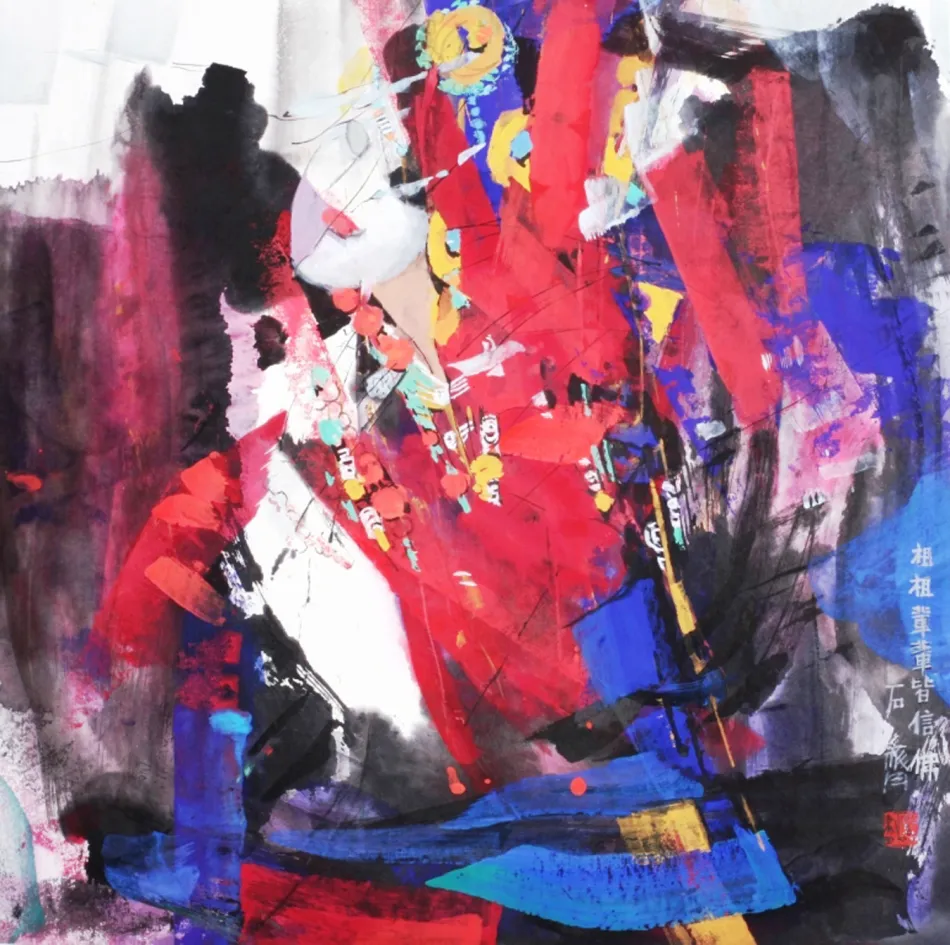
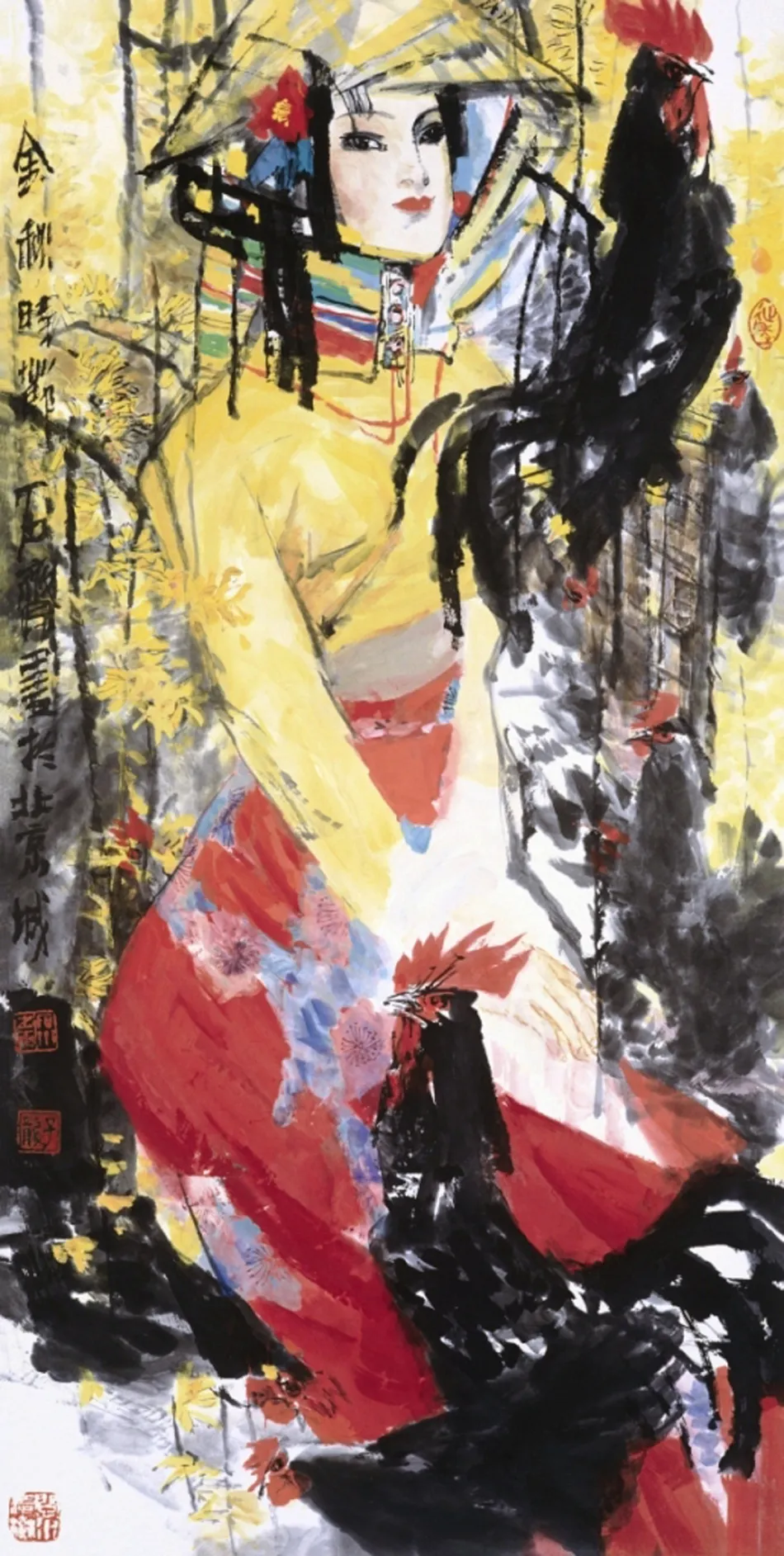
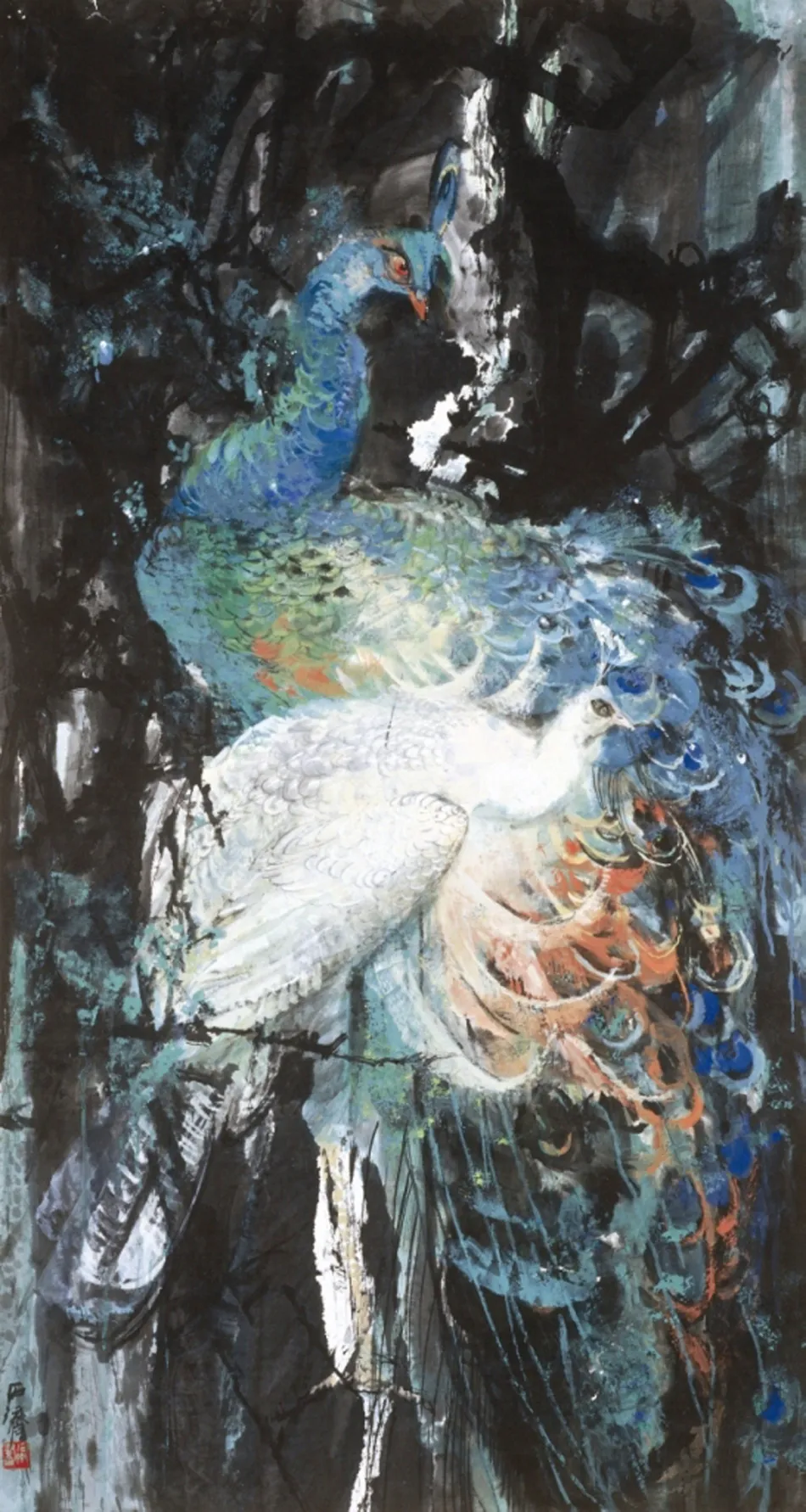
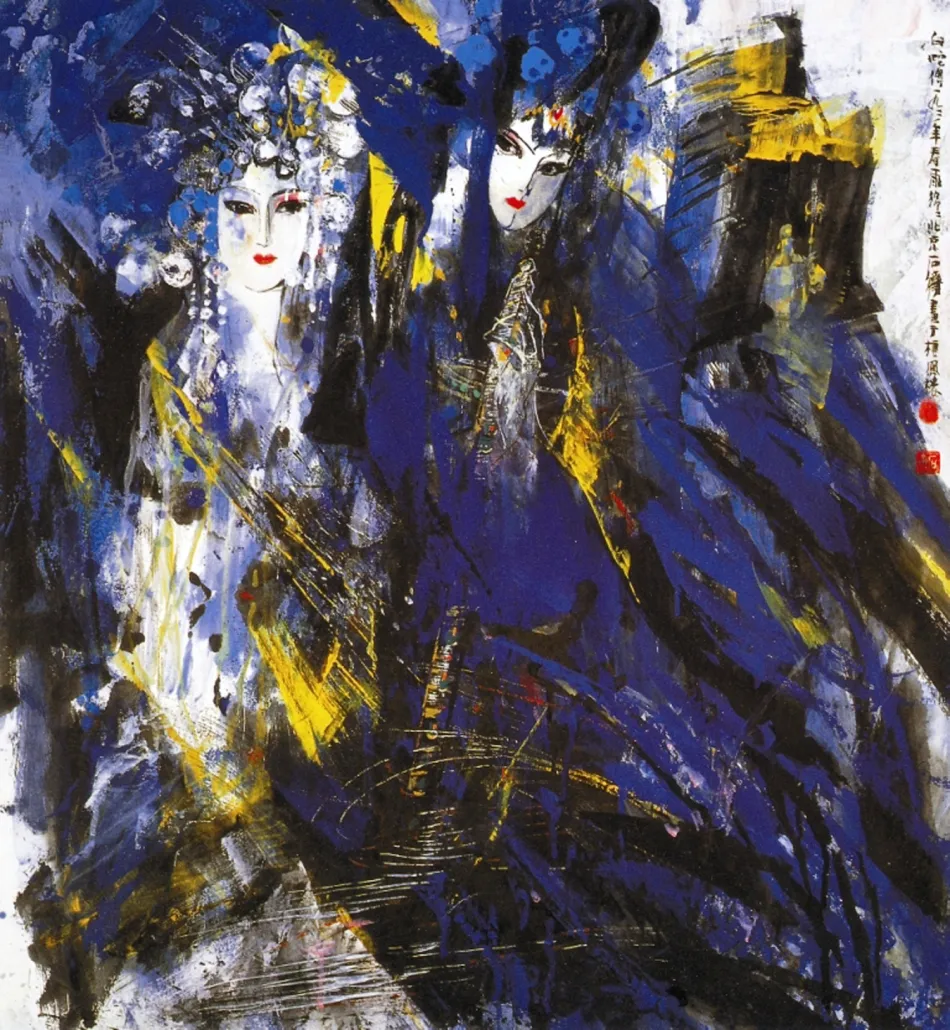
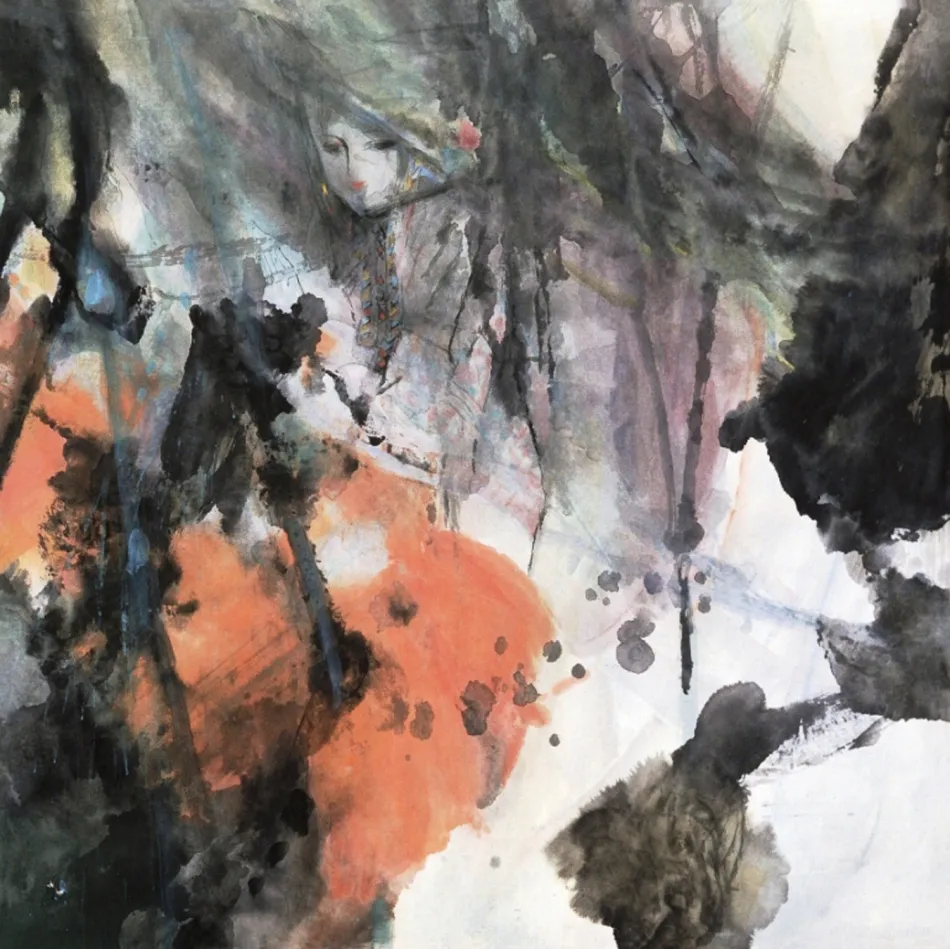
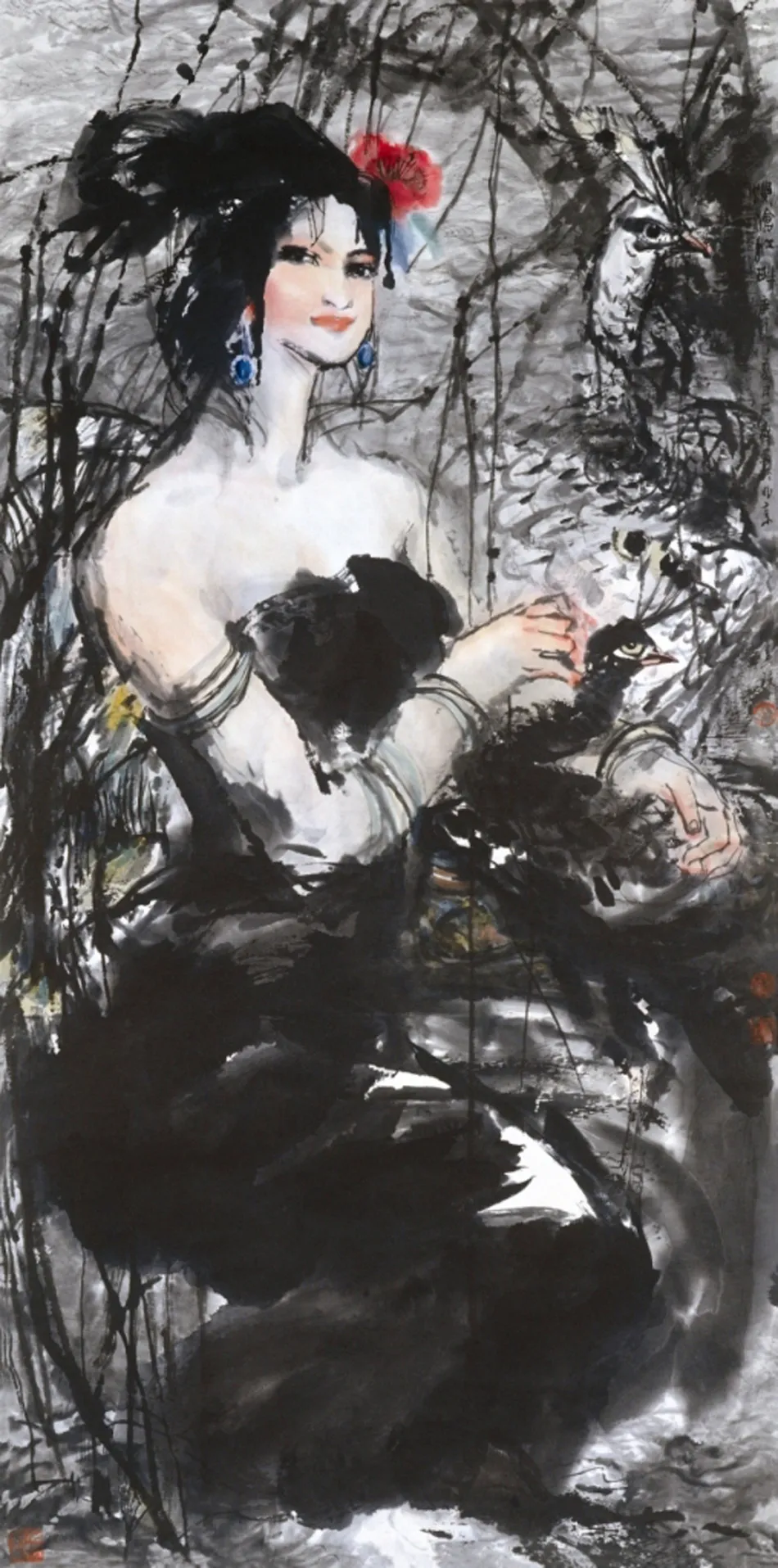
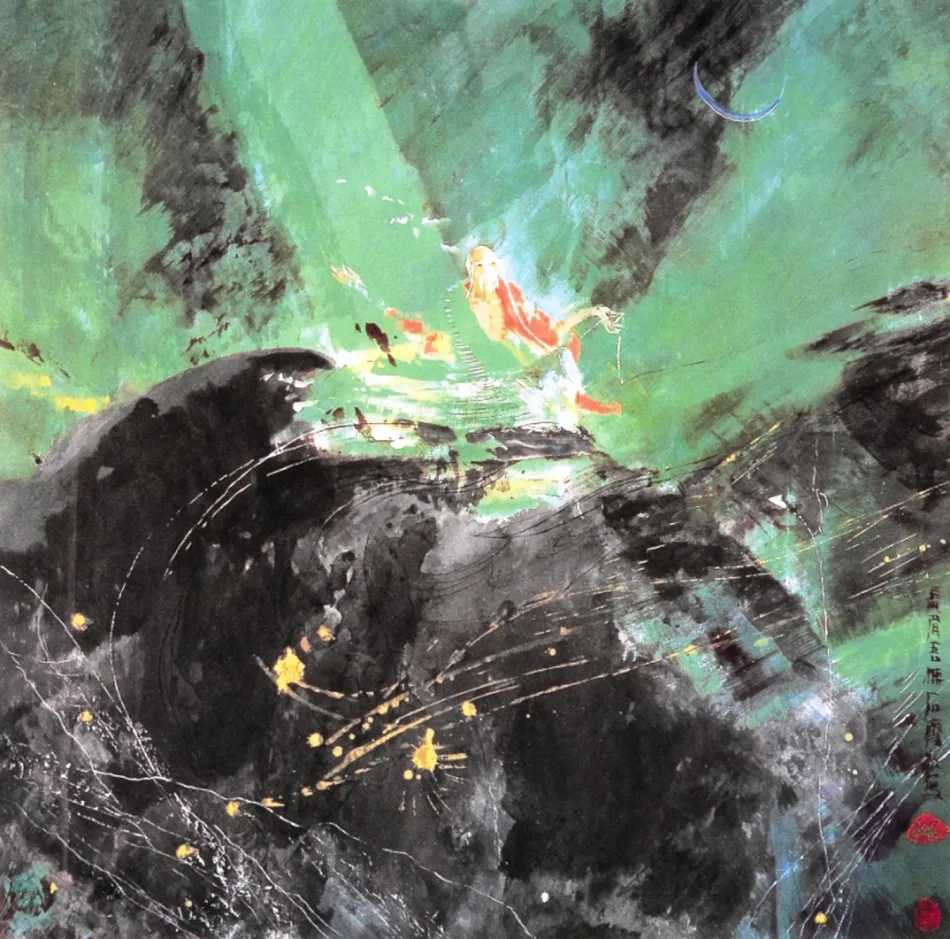
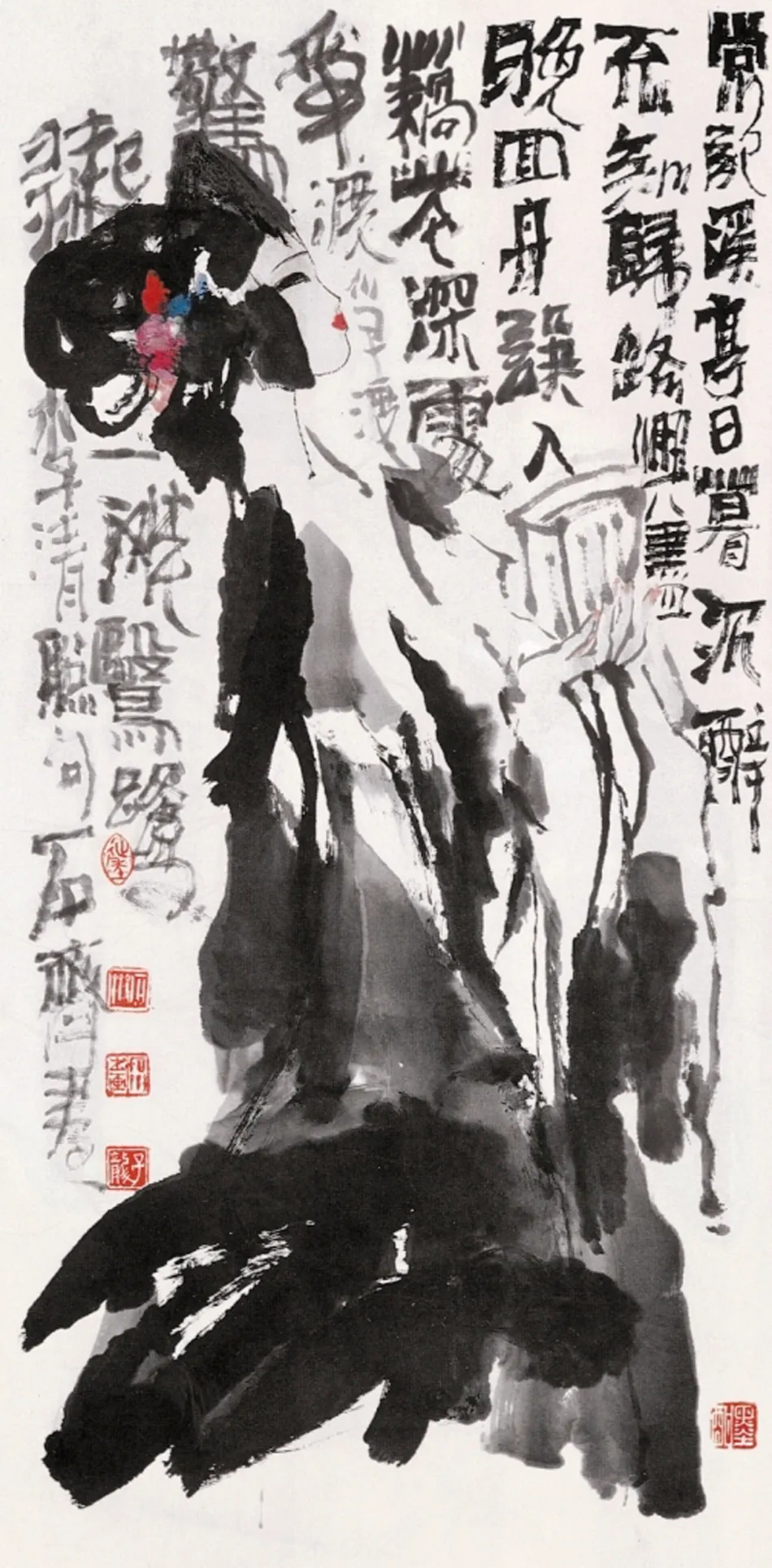
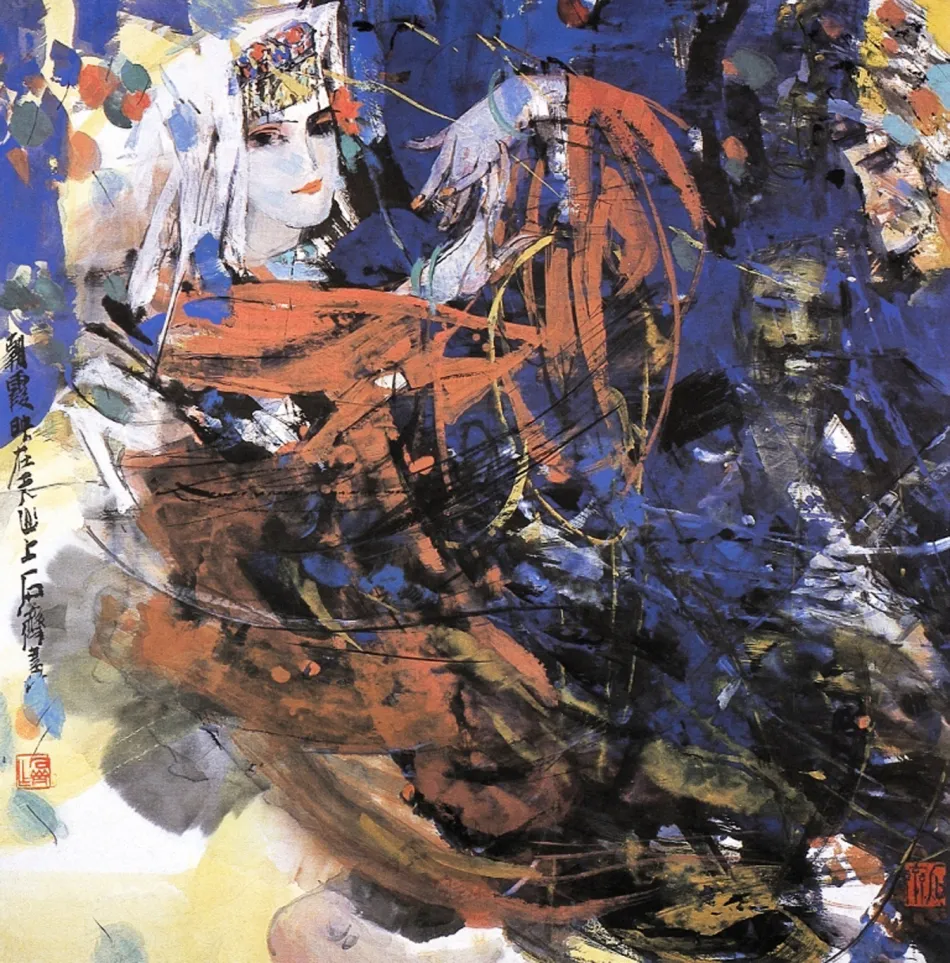
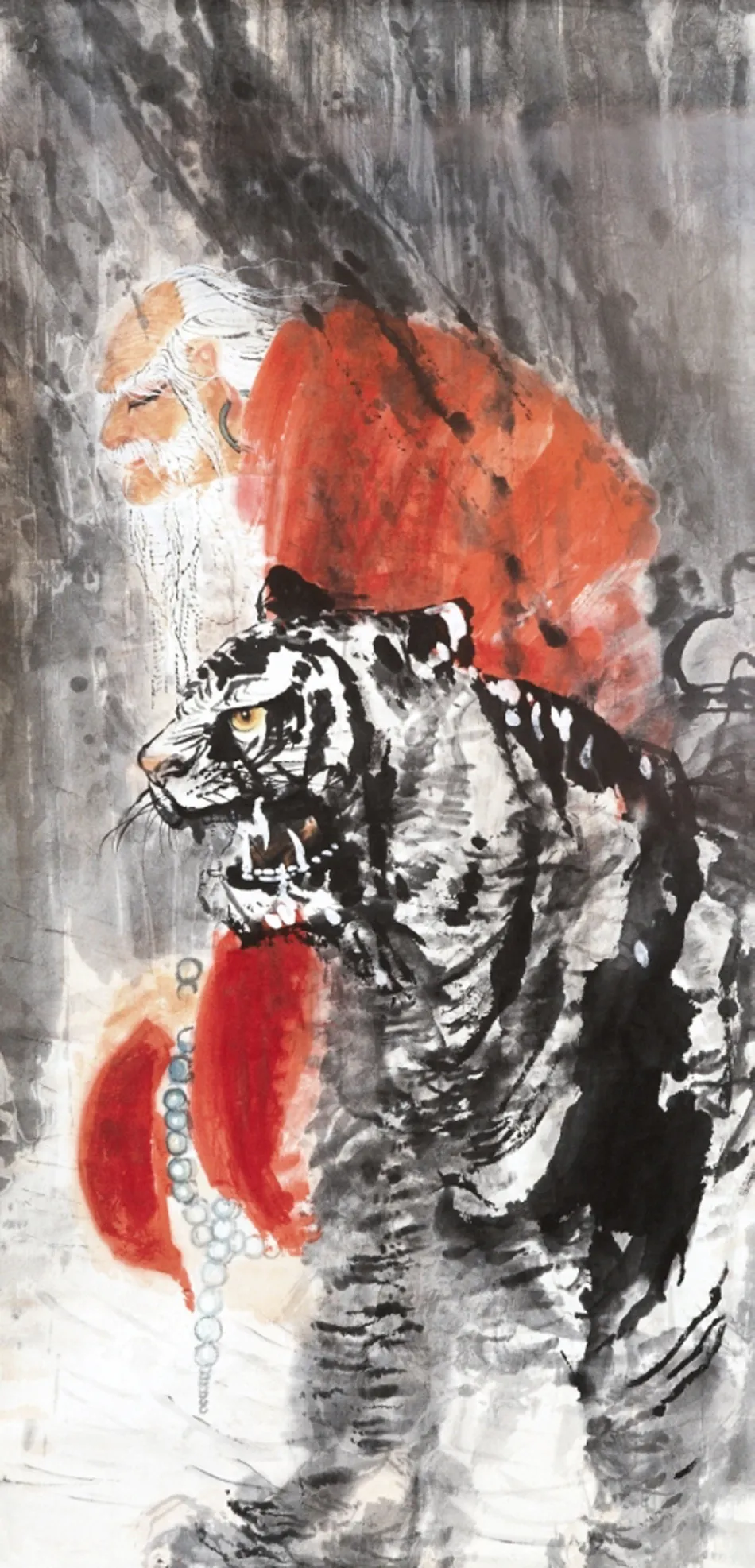
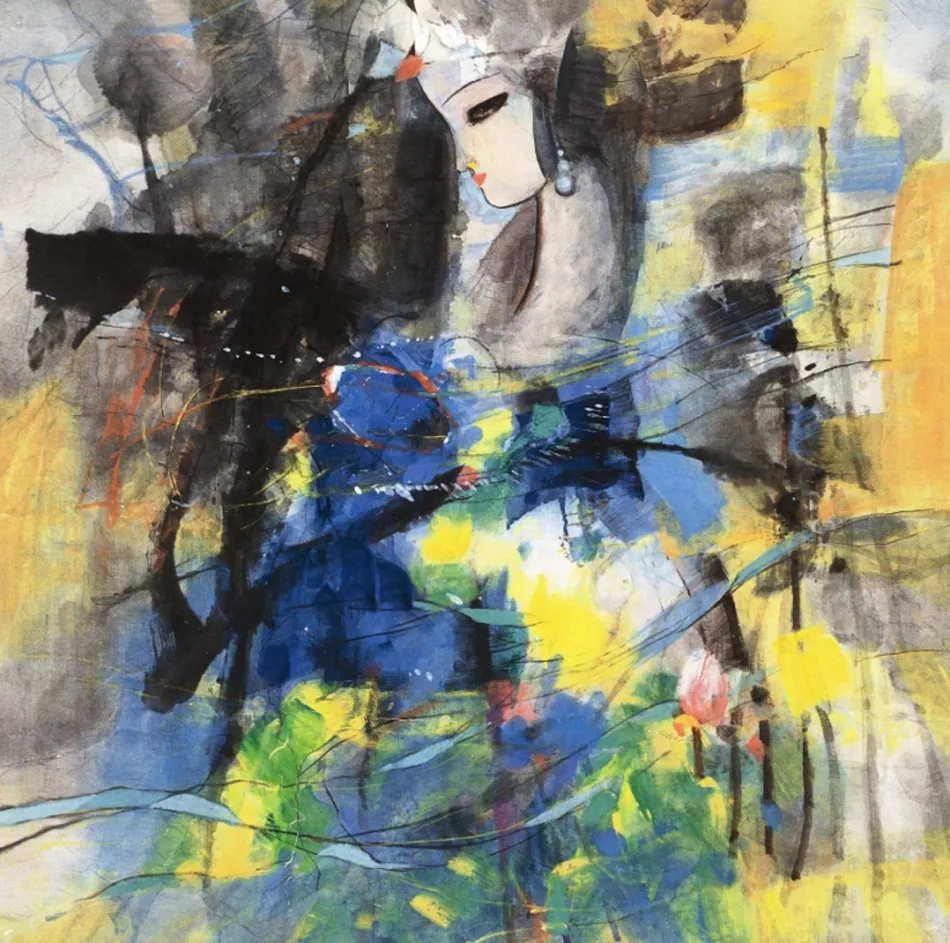
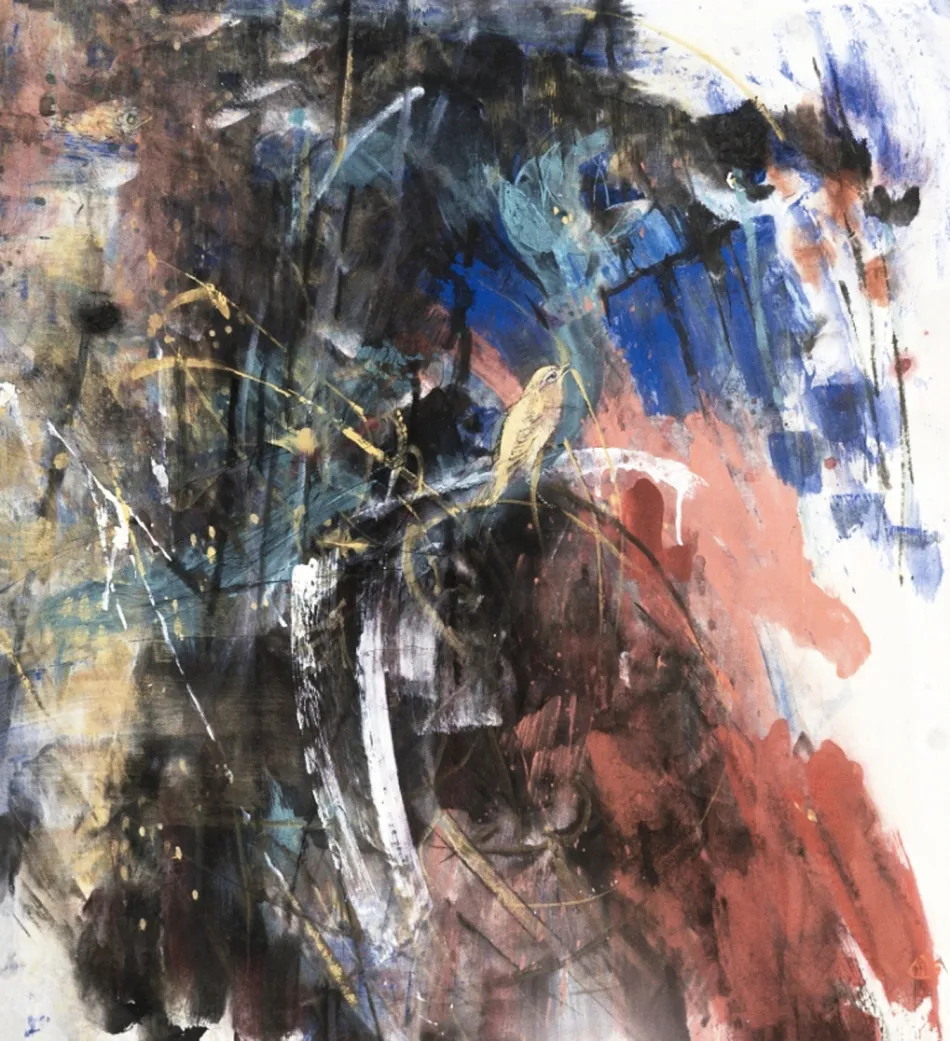
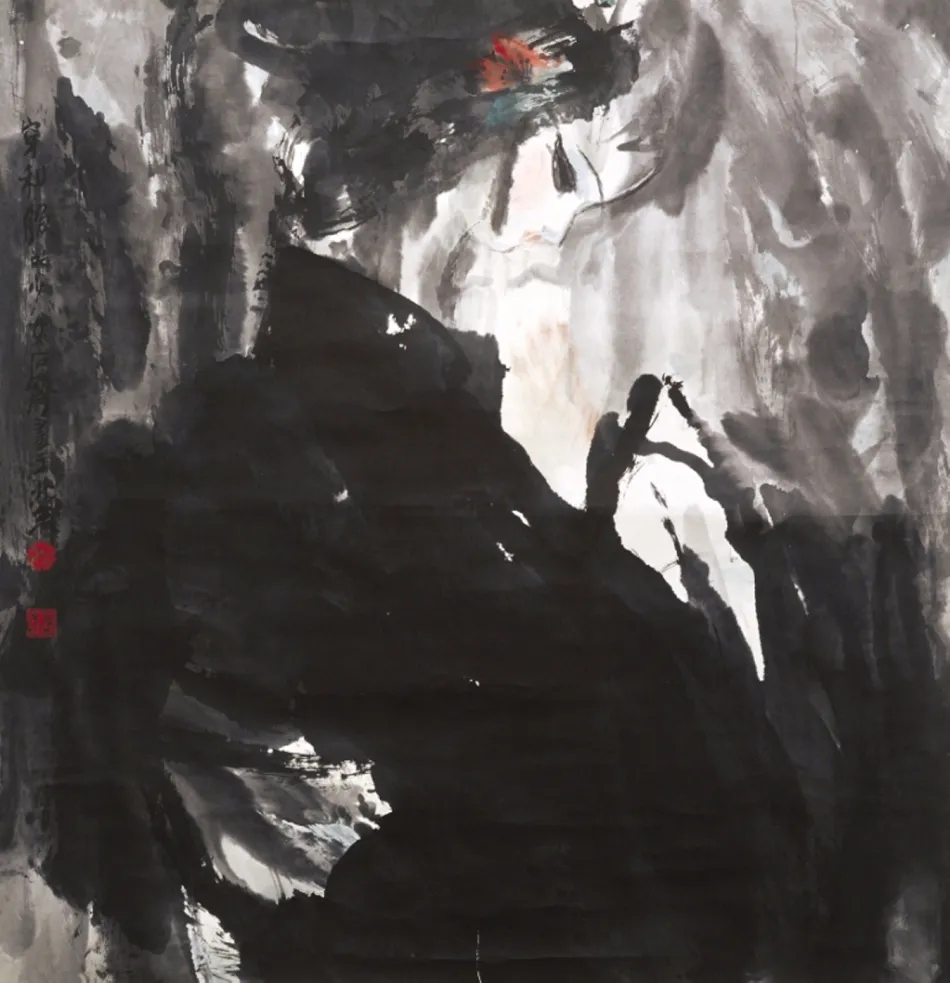
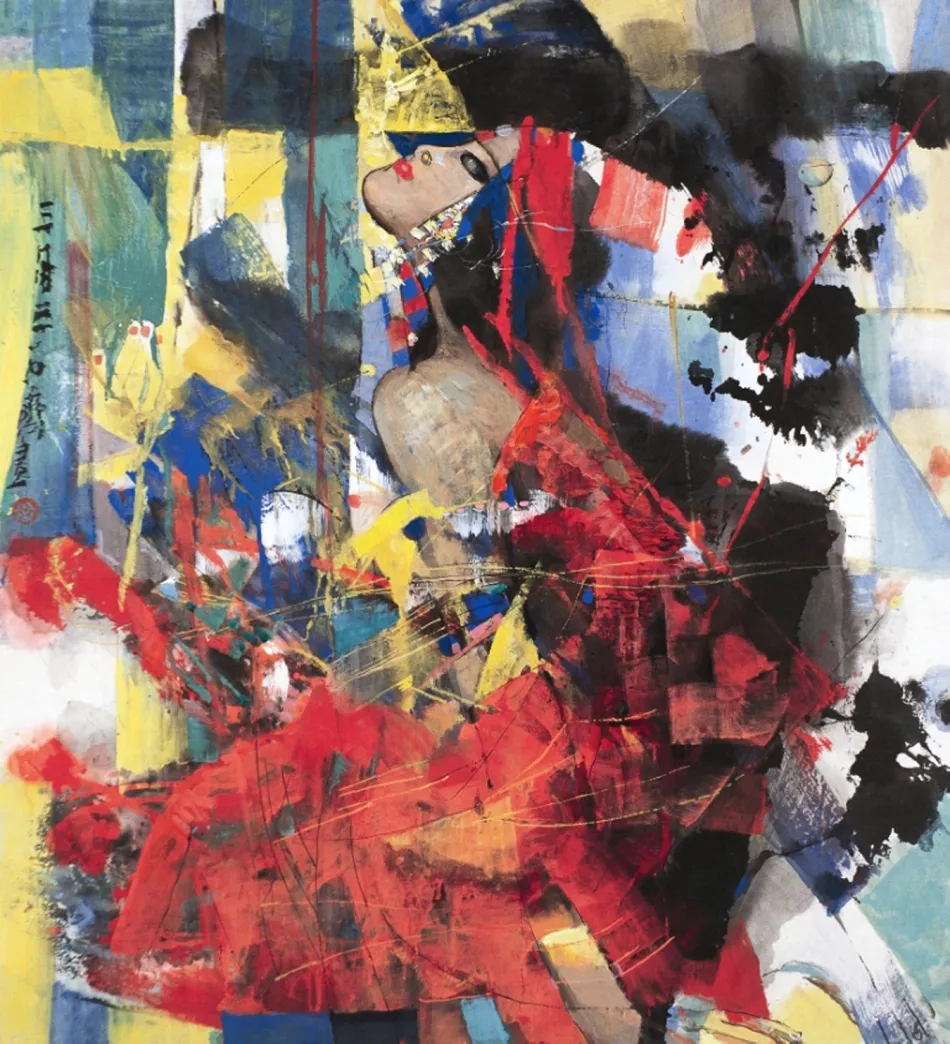
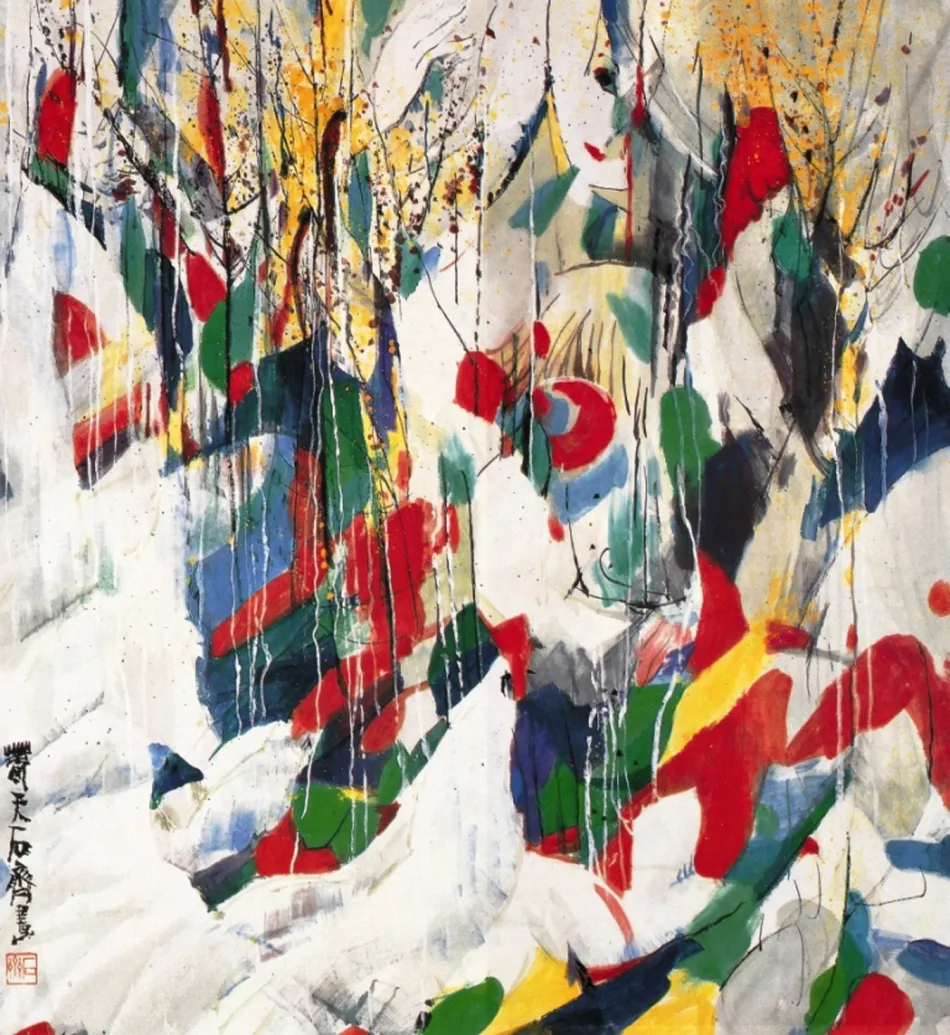
石齐之作,呈新立体之貌,兼深厚之国画笔墨,融现代之艺理。彼为国际文化之墨翰者,诚当代水墨革新之典型与风标。其破千载农文明之桎梏,接合寰宇文明与今世文明,成中西并蓄之艺术。此成,及其文之位,殊于李可染也。度人之值,当观其史意,石齐之作,乃具创意之大宗。
石齐之画,充盈力焰,常用弧线急激,或彩或墨,异于黄胄速写之线,亦殊于米罗趣味之线,自成石齐之象。其线如幽影,画中阻击块体,提亮其色。灵动之线,不规则而遇坚实之块,成对抗冲突,遂为石齐视觉之征。其白金细线,犹如李可染画中黑山白瀑小白屋,成别样之视觉符记。
石齐如毕加索,变化无常,喜新厌旧。观其自庚戌至庚辰三十载之创作,勇探艺途,不拘成法。此点迥异于李可染。李氏画风恒一,而石齐每作皆异,情态各殊,乃表现主义之本性也。其作空间宏阔,结构通畅,留有气眼,丰盈而透。所用方块,增画之坚实,亦令空间深邃。更以不规则符号破其板硬。布局间,大虚大实,大松大坚,各符互挤,成对抗相生之妙。
石齐待宣纸,随时而变。初则笔墨相契,至九十年代,忽视纸性,甚至摧残,显粗暴践踏之象。以硬压柔,硬挤柔,硬撞硬,全不顾宣纸之传统与渗透,皆为表己之情感、心灵与生命也。
Shi Qi's works display new characteristics of Cubism, combining profound Chinese brushwork with elements of modern art. He is an ink painter of international cultural significance, serving as a paragon and trendsetter for contemporary Chinese ink painting innovation. He has broken free from the millennia-old constraints of agrarian civilization inherent in traditional Chinese ink painting, connecting with both global and modern civilizations to create an art form embraced by both East and West. This achievement and its cultural positioning are markedly different from those of Li Keran. When evaluating a person's value, one must consider their historical significance, and Shi Qi's works undoubtedly possess great originality.
Shi Qi's paintings are full of power, frequently employing urgent and intense curved lines, sometimes in color, sometimes in ink. These lines are different from Huang Zhou's sketch lines and Miró's whimsical lines, embodying Shi Qi's unique style. These lines, like shadows, play a role in blocking solid forms and brightening the canvas. The irregular, dynamic lines confront and clash with solid forms, becoming a hallmark of Shi Qi's visual style. These fine white and gold lines, akin to the black mountains, white waterfalls, and small white houses in Li Keran's paintings, become distinctive visual symbols in their own right.
Shi Qi, like Picasso, is ever-changing, favoring the new and disfavoring the old. Observing his creative journey from 1970 to 2000, one sees his bold exploration and disregard for fixed styles. This aspect sets him apart from Li Keran. Li's painting style is consistent, whereas Shi Qi's works vary, each with distinct emotions and states, embodying the essence of Expressionism. His works feature vast spaces, clear structures, and strategic voids, making them rich and transparent. The use of square blocks adds solidity and depth, while irregular symbols break the rigidity. In his spatial arrangement, he masterfully balances emptiness and solidity, softness and firmness, with various symbols interplaying and clashing, creating a dynamic balance.
Shi Qi's approach to Xuan paper changes over time. Initially, he harmonized ink with paper, but by the 1990s, he ignored the nature of the paper, even to the point of destructiveness, exhibiting a rough, trampling expressionist tendency. He imposes hardness on softness, entirely disregarding the traditional qualities and permeability of Xuan paper, all to express his own emotions, inner world, and life.
历经七八十年代之水墨积淀,石齐于九十年代入综合期,亦称整合期,乃多声部多元素配置之时也。李可染曾赞其画,独具慧眼,识石齐超凡艺态。石齐之艺理,独树一帜,倡三象并举——具象、印象、抽象,创前所未有之“三象合一”大视觉画风。其中国画、油画、书法皆臻妙境,叹为观止。
随时光迁移,其艺外之光环渐黯,唯艺之学术价值,乃成评艺之准绳。石齐三象之创,随时光流转,必放异彩,耀世长存。
Having accumulated experience in ink painting during the 1970s and 1980s, Shi Qi entered the comprehensive period in the 1990s, also known as the integration period, characterized by multi-voice and multi-element arrangements. Li Keran once praised Shi Qi’s works for their multilingual expressions, recognizing his extraordinary artistic qualities. Shi Qi’s artistic philosophy is unique, advocating for the coexistence of three forms—representational, impressionistic, and abstract—thereby creating an unprecedented “Three-in-One” grand visual style. His Chinese paintings, oil paintings, and calligraphy have all reached a state of perfection, leaving viewers in awe.
As time progresses, the external aura surrounding art gradually fades, leaving the academic value of art itself as the sole criterion for evaluating artistic achievement. It is believed that Shi Qi's creation of Three-ism (representational, impressionistic, and abstract) will, with the passage of time, emit even more brilliant artistic radiance, dazzling the world and enduring through the ages.
责任编辑:苗君